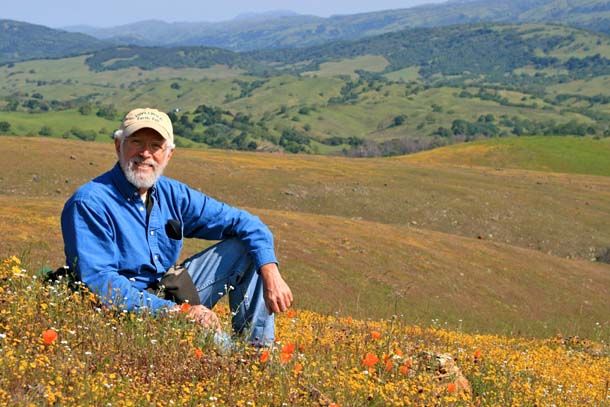It wasn’t too long ago that “field work” neatly summarized the ambit of ecologists and wildlife researchers. Yes, they also worked in the lab. But much – most – of the time they were literally in the field, and the primary tools of the trade were simple: notebooks, binoculars, some basic equipment for collecting specimens.
Of course, ecologists still spend time outdoors with notebooks and optics, observing and collecting the old-fashioned way. But their approach has been greatly augmented by technology, particularly digital technology. This is particularly evident at the University of California’s Blue Oak Ranch Reserve on Mount Hamilton, where reserve director Mike Hamilton is overseeing climate change studies.
To a very real degree, Hamilton and his peers aren’t studying Mount Hamilton: they’re hacking it, using highly sophisticated technology to compile data on the mountain’s ecosystems to a degree never before possible.
“Ecologists have always used the best tools available in their work,” Hamilton says. “But in the last decade, those tools have taken a great leap forward. Not too long ago, we measured manually, we collected samples by hand, and the models we developed were relatively coarse. Now we can make simultaneous distributed measurements and track interactions to a very fine degree.”
Indeed, Hamilton describes himself as a “digital naturalist,” and even a cursory review of the projects ongoing at Blue Oak Ranch confirm that’s no exaggeration. Blue Oak’s 3,260 acres are wired with sensors, each sending data streams on everything from soil temperature to vegetation condensation values to computers at the ranch’s headquarters. Wireless, automated cameras feed streaming digital images to a solar-powered server, and can be tweaked to track everything from plant phenology to nesting birds.
Another tool seems almost like a toy. Hamilton and company are using tiny drone helicopters to take high-resolution images of the ranch’s vegetation. The photos are used to compare chlorophyll in the plants with moisture measurements from the sensors, ultimately showing how different trees and shrubs respond to drought.
The helicopters are also employed in seminal studies on ground squirrel and rattlesnake interactions. Another aid in the squirrel/snake study is Robosquirrel, a taxidermied, “bionic” ground squirrel that has been programmed to produce sounds and movements real live squirrels associate with predators.
But even these tools seem prosaic when compared to some of the technology coming down the pike. In six or seven years, says Hamilton, researchers should have access to a “Star Trek tricorder-like” device that will allow them to take DNA samples on the fly.
“We’ll get much quicker, better data on gene expression,” he says. “You’ll be able to compare traits of one plant or animal with traits of another, right in the field. It could help you identify the specific valley oak genotypes, for example, that might do better in the drier conditions resulting from climate change.”
Hamilton hastens to add that the new technology isn’t putting any graduate students or research assistants out of work.
“This isn’t going to replace anyone,” he says. “We’re going to need more people, not fewer. Before, we’d typically go out a couple or a few hours a day to collect data. Now we’re getting the data on a streaming basis, 24-hours a day, and we have to analyze and correlate all of it. We have more work, not less.”





